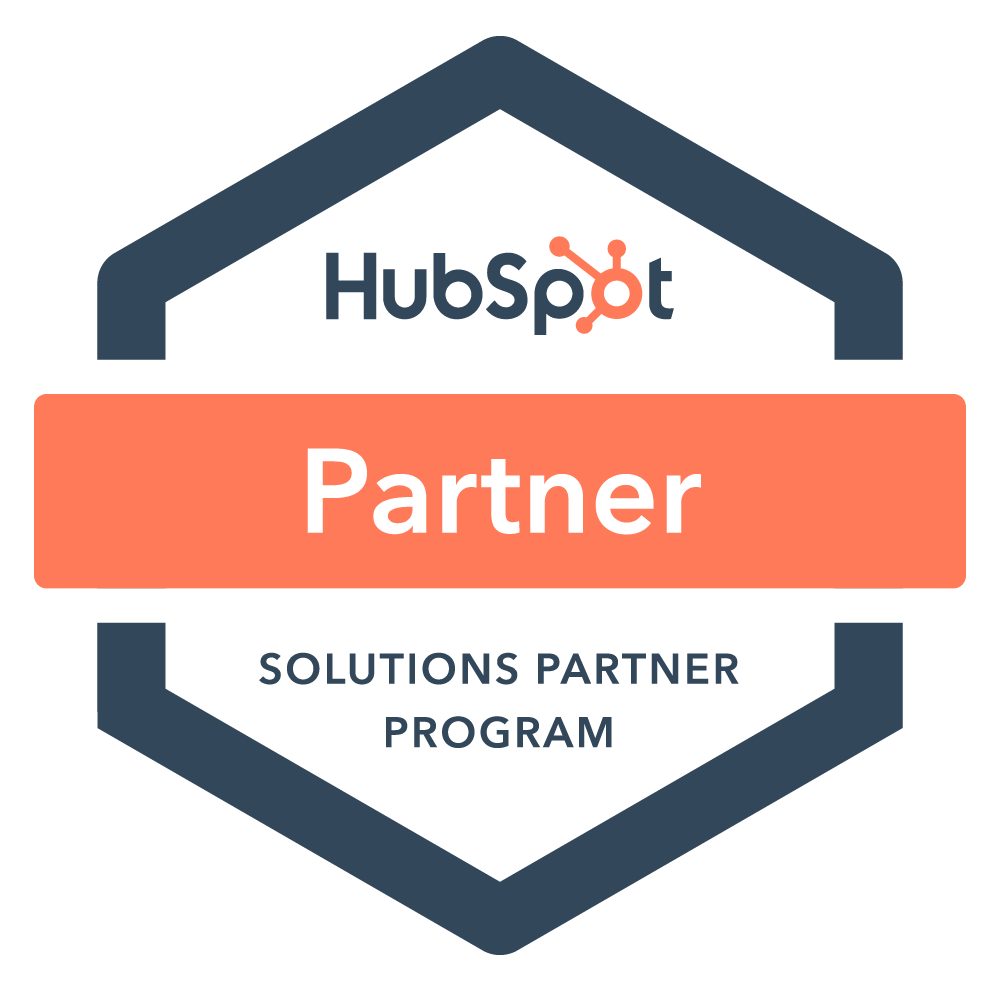In our blog on kickstarting inbound marketing, we covered crucial ground on why inbound is a great fit for SaaS start-ups. Today, we're going a step further to get in front of some classic objections to inbound. Read on to see how we've broken 10 common myths surrounding it.
Myth 1: Inbound Marketing is Free
Nope. This just isn’t true.
While inbound marketing can be more cost-effective than the outbound tactics of the past, it's far from free.
Inbound marketing covers a great deal, including content creation, search engine optimization (SEO), email marketing, and social media, all of which are going to take up bandwidth, money, and sometimes outsourcing.
Inbound is an investment in your future. It's about creating valuable content that attracts, engages, and delights your audience. Doing that isn't going to be cheap, nor free.
Your costs are going to range from paying for content production to hosting your blog (if you don't have a site) and leveraging social outreach tools to support the exposure of content.
Did you know? 93% of companies using inbound marketing increase their lead generation efforts.
Myth 2: Inbound = Immediate Results
Aren't we all becoming less patient? I know, it's easy to want instant gratification. It's hard not to with how everything around us works.
A core principle of inbound is its focus on building long-term relationships and trust with audiences. The key here is long. You can't turn the tap on and off, once started you've got to keep it flowing.
No sir, inbound marketing is not a get-rich-quick scheme. It's a patient, long-term strategy that takes time to bear fruit.
While you won't see immediate spikes in traffic or sales, you'll notice steady growth and a growing base of loyal customers.
You can monitor references to your content in sales conversations, and customers liking social posts, or track it all via a CRM like HubSpot.
If you build it, they will come.
Myth 3: Inbound Marketing is Content Marketing
This is about to get a little meta. Content is a significant part of inbound marketing, but it's just a chapter of the story.
Inbound and content are all about personas. Both focus on marketing that is based on engaging and delighting people with information and interactions with your business that create a love for what you do.
You don't need to think about the two as being at loggerheads with one another, as HubSpot rightly said.
If inbound is the meta strategy, within that you have sub-strategies. That could be social media outreach, events and conferences, email, and lastly, content creation.
Content is a chapter in many other stories too. Content is something you'll produce when enabling your sales team. Content is needed to support your channel partners. Content is needed for annual reports. Content is needed for knowledge bases and support chatbots.
You get the point.
Inbound is about more than content. Content is about more than inbound. The good news is that they mutually benefit one another.
Myth 4: Inbound Marketing is For B2B
Sure, content on inbound fills up the bookshelves of B2B commercial leads, but they're not the only people applying inbound.
The purpose of the inbound model is to deliver value. Whether your SaaS is aimed at a consumer, business, government, or whomever, you want them to care enough to part with their dollars.
Now, what does change inside the inbound strategy are the tactics.
B2C would typically look to TikTok or Instagram to leverage influencers.
B2G (business to government) would be applying content marketing to drive awareness of the policies they are focused on.
B2B borrows from B2C and B2G, combining social with content, email, and SEO to drive virality, awareness, and long-term buy-in of SaaS.
All roads lead to Rome.
If you still don't believe me, just look at this:
74% of global businesses rely on inbound marketing
Finances Online
Myth 5: Inbound Marketing Decimates Outbound
Admittedly, this is a myth I believed at the start of my career.
Working in a telco with field and desk-based sales reps, focused on making dials and creating smiles will do that. No, really.
Faced with nose-diving productivity, shrinking MRR, and poorer quality reps, I had the solution - inbound!
That wasn't the case. As inbound got up and running, the outbound tactics of cold calling, emailing, and canvassing continued. Their results remained the same, but inbound wasn't an immediate success (see myth two).
It was only by coordinating inbound and outbound that we created a framework that pulled and pushed people through the flywheel. Door-to-door canvassing, follow-up direct mail, supporting email, reaching out on social, follow-up calls, and content to increase trustworthiness.
That blended approach of inbound and outbound helped the sales team generate a 133% increase year on year for sales-qualified leads. That translated into 1.1m ARR won with inbound support.
Myth 6: Inbound Marketing Doesn't Need SEO
Search engine optimization (SEO) is a key cog in the flywheel of inbound. I'd go one better, it's up there with product marketing for importance.
Why?
There are billions of searches on Google, Bing, and co. every day. While these people are not all the right people for you, it goes to show how much time we spend on our browsers. AI is going to intensify that.
You can't decouple SEO from inbound and content.
The shift is getting yourself heard through the bombardment of AI-generated content.
SEO should be part of your product marketing research and filter down into your content, social, link-building, and other digital channels.
One of the easiest ways for a SaaS start-up to miss the mark is to skip SEO - or even worse, do SEO the wrong way.
Inbound needs SEO. Period.
The idea of stuffing content with keywords you think consumers are using is gone, because now consumers are having complex conversations with the search engine...[so content optimization not only] becomes about writing in natural language...it becomes the lever that search marketers have.
Nikhil Lai, Senior Analyst, Forrester - from "What It Means"
Myth 7: Inbound Marketing Is As It Always Will Be
Inbound marketing is always evolving. That's because buyers are always changing in what they want and how they want it.
Take the inbound model that HubSpot gave the world.
The model was once set out as a funnel, like below:

In this setting, the journey was linear - as our understanding was at the time. You, as a prospect, find a SaaS company via its content. You then hand over your details. You get emails and sales rep calls. You convert into a customer, you're surveyed and monitored.
It's not a bad model, but it does not account for the journey we now take. More people are involved in buying, for instance, making purchases 77% more complex.
And what about the role of the channel? We've now got more influencers, resellers, marketplaces, and distractions on that journey. It's the decade of the ecosystem.
Those shifts don't account for a whole raft of other issues around cookies going bye-bye, or the role of places like G2 and Capterra to sway buyers.
Simply, that's what led HubSpot to revise its thinking and introduce the flywheel concept. People come in and out, your job is to adapt inbound tactics to keep the thing spinning.
And that's to say nothing about the ethos of inbound - try, fail, fail again, and keep going until you land on what works.
Myth 8: Inbound Marketing is One and Done
The myth that you can set up inbound and forget about it is a recipe for disaster.
There are multiple strands of inbound that take on-going support:
- Content development from keyword research and persona feedback
- Refining your marketing nurture and sales sequences
- Back-link building
- Optimizing your website and content
- Defining, implementing, and tweaking lead scoring and prioritization
- Email development, personalization, and management
- Social media listening, outreach, and management
That's a long list, and why larger SaaS companies often have teams dedicated to an inbound strategy.
The reality is that SaaS start-ups don't. But don't give up hope of using this strategy. It just matters about who you have helping you.
Ultimately, you need an unwavering focus on delivering value.
Myth 9: Inbound Marketing is Only SaaS
That's a fair assumption to make. SaaS is all about monthly subscriptions, so you need to be on your toes with delivering value month after month.
Value.
There's that word again. Why does delivering value have to be synonymous with SaaS? It doesn't. In fact, the SaaS space as a whole can, and really should, adopt inbound marketing.
The SaaS buying journey differs depending on what you offer and how you offer it, but by and large the currency of success is trust. After all, inbound is trust-based marketing.
If you're a SaaS start-up adopting a PLG motion, you need to get people into the product. That often comes from virality. How's it done? An inbound strategy.
If you're a SaaS service company, you need to prove that what you delivering in services and consulting is of high value. How? Through creating content that helps buyers trust you. That's inbound.
If you're a SaaS company that generates business through tenders, you need the procurement team to find you, understand you, and ultimately trust you ahead of anything entered onto that tender. How? Inbound marketing.
If you're a telco that runs outbound, field-based sales and wants to add credibility to the canvassing and community outreach that you do? Turn to the inbound play.
If you're a B2B SaaS companies that's focused on SMB and above markets. You get trust and you get recognition by adding value to your prospects and their buying committee. How? Inbound.
You get the point. SaaS is one strand of the SaaS space that inbound fits.
Myth 10: Inbound is Hard To Learn
Well that's just a straight up lie.
By reading this inbound marketing list, you're learning about inbound.
You can go through many inbound assessments to learn about inbound. Here's a couple that come to mind:
- HubSpot inbound marketing certification - free and here
- Impact's Inbound Lead Generation & Conversion Optimization course - available to buy here
- Semrush's Social Media Marketing Crash Course - free and here
And that's to say nothing about the tonnes (yes, quite possibly a tonne) of books out there to help you with inbound, including these favorites:
- Marcus Sheridan's "They Ask You Answer" - here
- Eli Schwartz's "Product-Led SEO" - here
- Ann Handley's "Everybody Writes" - here
These courses and books are easy to digest, but make no mistake that it does take consistency and an always-learning mindset to do inbound marketing the way it should be done - well!
Want To Be Better?
Inbound has a lot of noise around it. Some people try it, put it back down, and claim it's not made for them.
Perhaps it isn't. If you're impatient, don't want to deliver value to your buyers, and think the way forward is to interrupt them, no amount of myths we've just shattered will matter.
But what if you do want to try something better?
At theorytwenty7 marketing, inbound has been pumping through our veins for over a decade. We love it. We think you will too.
The problem is getting started. That's what we do for SaaS start-ups, get you up to speed and consistently leveraging inbound to drive sustainable growth.
Discover how our end-to-end SaaS marketing inbound marketing solution can help you by booking a discovery call today.

James Milsom
When I'm not spending time quoting What We Do In The Shadows, The Office, or Parks and Rec, I'm watching the Georgia Bulldogs (Go Dawgs!), walking our dog Crosby with my wife, McKenzie, or geeking out on tech. I find time to eat, sleep, and work out too (honest!)







